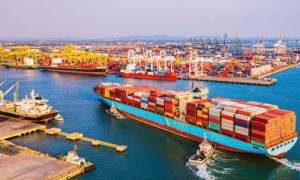Australia and the ten countries that form the Association of Southeast Asian Nations (ASEAN) enjoy economic ties that stretch back nearly half a century. In fact, Australia became the first of ASEAN’s ten dialogue partners way back in 1974 ,1 and the trading bloc is the country’s second largest trading partner. Recent developments suggest that relations look set to deepen over the coming years.
Building on strong foundations
At the first annual ASEAN-Australia Leaders Summit, held in October 2021, both sides underscored the importance of the relationship. Australia described how it would invest A$154 million into future cooperation, via a number of measures. 2
These include an ASEAN Futures Initiative that will support projects, with A$124 million of funding, to address complex challenges facing the region – such health and energy security, promoting the circular economy, and fighting crime. In addition, Australia aims to provide 100 scholarships for ASEAN students to help advance focal points of cooperation, like sustainable development.
Closer ties will build on strong foundations. In 2020, trade between ASEAN and Australia reached A$242 billion.3 There is also a free trade agreement between ASEAN, Australia and New Zealand.
Australian trade with ASEAN, along with the broader Asia region, will be boosted by the Regional Comprehensive Economic Partnership (RCEP), which came into force at the start of 2022. This is the world’s largest free trade agreement and the Australian government acknowledges that the agreement will “further strengthen Australia’s trade relationship with ASEAN at a crucial point in ASEAN’s economic development”.4
Australian companies are highly active across ASEAN. Not only are nine of the bloc’s members among Australia’s top trading partners, accounting for 58% of its two-way trade, 5 while 60 of the country’s largest 100 companies have subsidiaries in the trading bloc.6 The companies represent a wide range of industries – from mining and manufacturing to services.
The case for doing business in ASEAN is clear. The combined population of its member states is 660 million people, making it the third largest consumer base in the world, after China and India. 7 Sustained economic growth means that these young and digital savvy consumers are increasingly affluent and able to buy a growing range of goods. At the same time, the region has significant infrastructure needs, which require a steady supply of resources.
Destination Australia
The direction of trade and investment goes both ways, as ASEAN countries are a significant market for Australian goods and services. ASEAN is making significant investments in Australia, which is the world’s 14th largest economy despite accounting just 0.3% of the global population. In 2019, foreign direct investment from ASEAN to Australia was worth A$13.4 billion.8
These investment flows will likely grow in the short term, as Australia is predicted to become the world’s ninth most attractive destination for FDI, due to the country’s high level of political stability, transparent regulatory system, and sound legal economic resilience. Furthermore, the Australian economy is resilient, having quickly recovered from its first recession in 30 years.
Australia’s way of life is itself a selling point, attracting people from all over the world to enjoy its tourist destinations and study in its universities. It should be no surprise that education and tourism are Australia’s major service exports to ASEAN.9
Across the world, sustainability is becoming a key focus for both policymakers and the corporate sector. One survey found that 84% of Australian companies expect to increase sales as a direct result of embedding sustainability into their business practices. The Council of Australian Governments Energy Council has a vision to create a clean, safe and competitive hydrogen industry, making the country a global player in this industry by 2030.



















